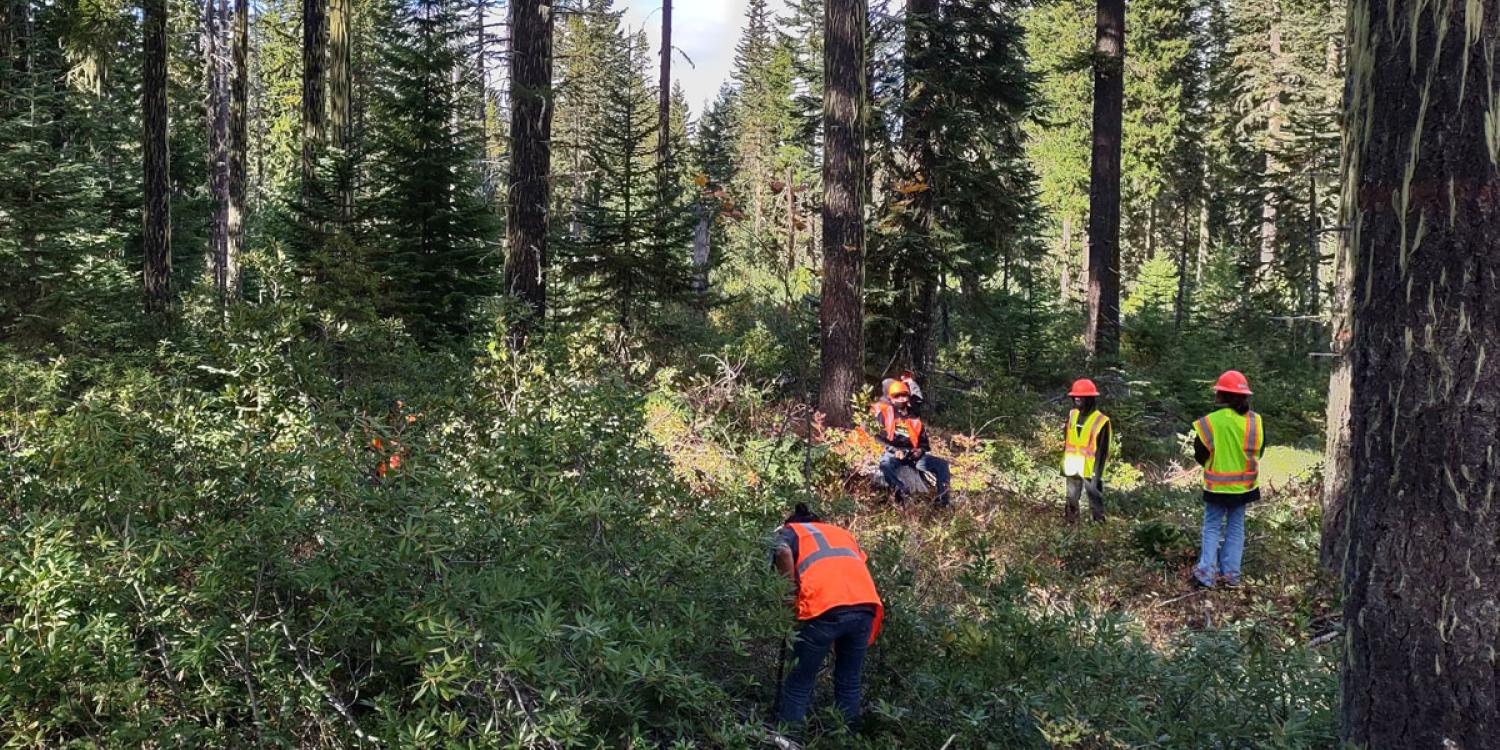
There’s concern among tribal members of the Confederated Tribes of Warm Springs that youths aren’t getting enough outdoor and science educational opportunities, especially opportunities with connections to tribal culture, values and traditional knowledge.
Adding to the issue, Warm Springs high school graduation rates, which had been increasing, were threatened during the COVID-19 pandemic. Without higher education and exposure to job opportunities, students often miss out on the many natural resources careers in the Warm Springs community, the largest in Oregon.
During summer 2021, Warm Springs Tribal Council and the Education, Work Experience Development and Culture and Heritage departments approached Oregon State University Extension Service to lead an outdoor youth program and develop a curriculum for future courses. The goal was to prepare students with hands-on learning experience for a career in natural resources or related fields, including research, forestry, wildlife conservation and water resources. The course would engage students with the natural world and connect them with culturally valued resources provided by upland and aquatic ecosystems.
In response, Thomas Stokely, then an OSU Extension forester, in partnership with OSU Extension local liaison Tracy Wilson and Open Campus faculty Jennifer Boyle, collaborated with the Warm Springs community to develop a course schedule, plan six field trips and recruit students. He worked closely with staff from various departments, which helped to provide a complete set of outdoor educational activities that spanned a variety of topics, from forestry and wildlife to traditional resources and cultural connections.
The course launched in October and included six field trips of about eight hours each and four after-school sessions. Field trips and classes included water quality, botany, culturally valued plants, forestry, fire and wildlife. Throughout each class, tribal members tied the lessons to culture and heritage of Warm Springs tribes.
During the water quality field trip, students gained knowledge and interest in aquatic food webs as well as the ways that human infrastructure can affect water quality and stream ecosystems. During the huckleberry field trips, students cleared non-huckleberry shrubs and small trees from approximately one acre of forest. They were connected with traditional tribal foragers, who taught techniques for managing, harvesting and processing various plants, including huckleberry and cedar root.
The forestry course exposed students to various forest management practices and the role that fire plays in the ecosystems found on the east slope of the Cascades. Finally, the wildlife course revealed great interest in the conservation of species found in Warm Springs, including golden eagles.
During after-school sessions, Boyle worked with students on college preparations and career development options. The course ended with a trip to the OSU campus in Corvallis and the High Desert Museum in Bend.
As a result, the success of the program led to more collaboration and additional field trips. In December students went to the coast and in January they were introduced to Smith Rock State Park. The youth enthusiastically expressed their interest in the outdoors, with three indicating an interest in a career in natural resources, including forestry, wildlife and genetics.
An evaluation by two students noted an increased knowledge of ecology and the culture of the three Warm Springs tribes, which was a high priority for the class. The students said they would like more classes, demonstrating an increased desire and willingness to learn. The greater relationship between OSU Extension and tribal members has led to the program’s extension and expansion into spring and summer 2022.